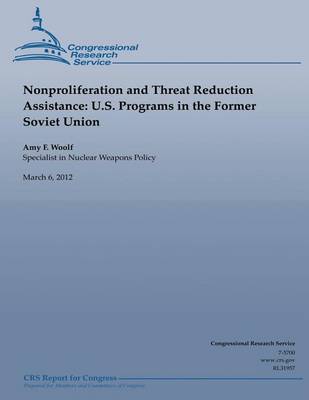Congress passed the Nunn-Lugar amendment, authorizing U.S. threat reduction assistance to the former Soviet Union, in November 1991, after a failed coup in Moscow and the disintegration of the Soviet Union raised concerns about the safety and security of Soviet nuclear weapons. The annual program has grown from $400 million in the DOD budget around $1.1 billion across three agencies -- DOD, DOE and the State Department. It has also evolved from an emergency response to impending chaos in the Soviet Union, to a more comprehensive threat reduction and nonproliferation effort, to a broader program seeking to keep nuclear, chemical, and biological weapons from leaking out of the former Soviet Union and into the hands of rogue nations or terrorist groups. The Department of Defense manages the Cooperative Threat Reduction (CTR) Program, which provides Russia, Ukraine, Belarus, and Kazakhstan with assistance in transporting, storing, and dismantling nuclear, chemical, and biological weapons. U.S. assistance has helped these nations eliminate the delivery systems for nuclear weapons under the START I Treaty, secure weapons storage areas, construct a storage facility for nuclear materials removed from weapons, construct a destruction facility for chemical weapons, and secure biological weapons materials. The State Department manages the International Science and Technology Centers in Moscow and Kiev. These centers provide research grants to scientists and engineers so that they will not sell their knowledge to other nations or terrorist groups. The State Department has also provided assistance with export and border control programs in the former Soviet states. The Department of Energy manages programs that seek to improve the security of nuclear materials at civilian, naval, and nuclear weapons complex facilities. It also funds programs that help nuclear scientists and engineers find employment in commercial enterprises. DOE is also helping Russia dispose of plutonium removed from nuclear weapons and shut-down its remaining plutonium-producing reactors by replacing them with fossil-fuel plants. Analysts have debated numerous issues related to U.S. nonproliferation and threat reduction assistance. These include questions about the coordination of and priority given to these programs in the U.S. government, questions about Russia's willingness to provide the United States with access to its weapons facilities, questions about the President's ability to waive certification requirements so that the programs can go forward, and questions about the need to expand the efforts into a global program that receives funding from numerous nations and possibly extends assistance to others outside the former Soviet Union.
- ISBN10 1490518878
- ISBN13 9781490518879
- Publish Date 24 June 2013 (first published 1 October 2008)
- Publish Status Active
- Imprint Createspace Independent Publishing Platform
- Format Paperback (US Trade)
- Pages 68
- Language English
